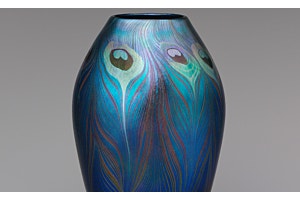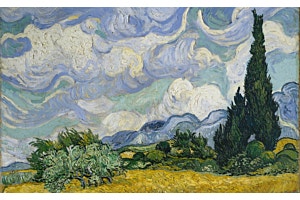
Unique Art Jewelry for Her
The Museum’s holdings teem with timeless depictions of love: allegories of romance, declarations of devotion, celebrations of betrothal and marriage, memorials to the dearly departed, and, of course, valentines.


The valentine, now associated with courtship, evolved out of the medieval practice of giving religious images on richly embellished parchment as commemorative gifts. By all accounts, it wasn’t until the 17th century that lovers began exchanging flirty mementos on the Feast of Saint Valentine, observed annually on February 14, and with time, it became increasingly common practice to present your beloved with an affectionate token in honor of Saint Valentine's Day.


Thanks to developments in decorative paper and the graphic arts, the valentine became an industry as well as an evolving art form, with some examples serving as true masterpieces of artisanship.


Some of the earliest valentines in The Met collection were made in Germany, which appears to have played a particularly pioneering role in the cultivation of a valentine industry. England followed suit, especially during the Victorian period, while the United States imported European valentines before local production took off—largely thanks to the eye-catching creations of the "Mother of the American Valentine,” Esther Howland (American, 1828–1904).


In honor of this rich, romantic tradition, we’re delighted to present our new British Valentine Jewelry, a demi-fine collection of gilded sterling silver, also referred to as gold vermeil.




Delicately decorated with garnet and cultured freshwater pearl, the floral motif on our functional golden locket and drop earrings evokes a British valentine produced around 1875. The original bears a colorful bouquet of flowers with the endearing message, “Ever yours.”


Flowers feature on many valentines as emblems of love in their own right. Among the most romantic species is Myosotis scorpioides, better known as the forget-me-not. Its blue color was associated with fidelity in the Middle Ages, and legend has it that “forget me not” were the final words uttered by a dying German knight to his lover before he drowned while attempting to pick some for her as a gesture of his affection.


Forget-me-nots are found throughout The Met collection, in still lifes and on symbolic decorative objects, such as a 20th-century locket resembling a half-leather-bound book.


Our new Forget-Me-Not Jewelry in sterling silver evokes this elegant piece, one of several of its kind belonging to The Met’s Thomas J. Watson Library. Decorating the cover is a stylized sprig of what are probably forget-me-nots, enhanced with pops of blue and green enamel, which we’ve adapted on our vision of the original design.
This collection comprises two pairs of small stud earrings, sold as a set, and a functional locket necklace—an ode to a long withstanding style of jewelry designed to remind the wearer of their beloved by way of their initials, likeness, or even a lock of their hair.




Shop Inspired Designs from Our Museum Gift Shop
Browse our newest jewelry arrivals and best sellers online and in-store at The Met Fifth Avenue.



